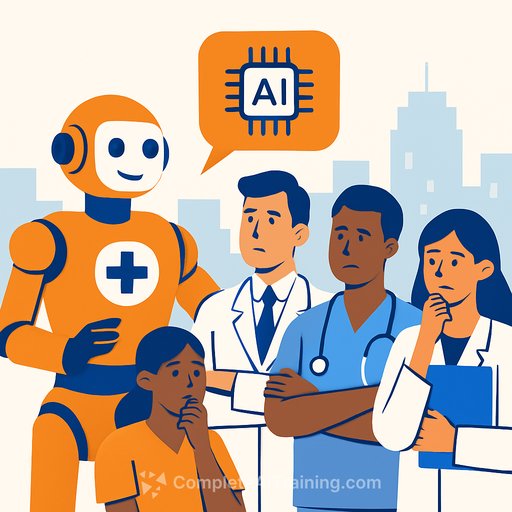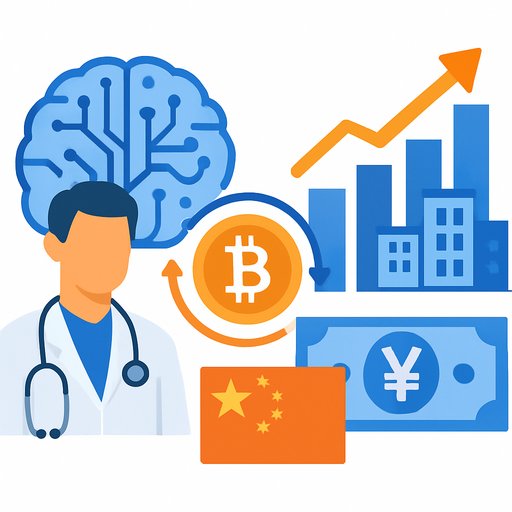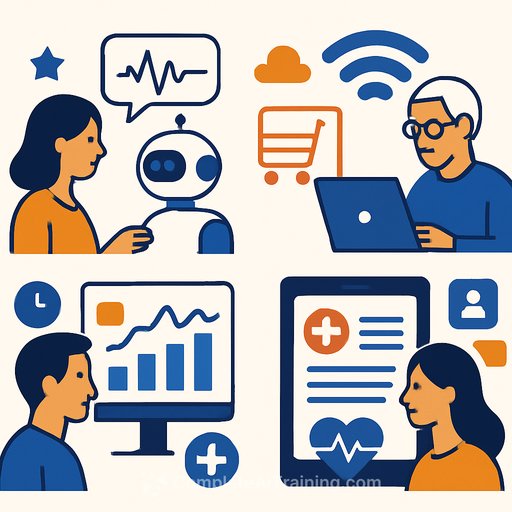Top 5 Healthcare Jobs in San José Most at Risk from AI — And How to Adapt
In San José, AI is reshaping healthcare jobs that involve routine, repeatable tasks. Roles like clinical documentation, medical interpreting, billing and coding, radiology triage, and entry-level health IT face growing automation risks. The good news? Reskilling into AI oversight, prompt engineering, and auditing can preserve jobs and improve accuracy.
San José matters because it’s where Silicon Valley’s health startups, hospitals, and clinicians are actively adopting AI tools. While healthcare AI adoption overall is still below average, certain tools—like an AI twice as accurate at interpreting stroke scans—are already proving their value. Hospitals are investing in AI governance, interoperability, and clinician co-pilots to lighten burnout.
Locally, San José’s AI-healthcare ecosystem is testing prompt standards and vendor explainability that cut documentation time and improve coding. California workers and employers face a clear choice: reskill for practical AI use or risk routine tasks being automated. Programs offering 15-week pathways to AI readiness provide a practical way to adapt.
Methodology: How These Jobs Were Chosen
The top 5 roles were selected by focusing on local signals rather than broad trends. We looked at San José-area job postings and employer listings to identify roles with a high concentration of routine, automatable tasks. Sources included local job ads, health IT role descriptions, and regional research on AI use cases overlapping with documentation, coding, triage, and interpreting.
Clinical Documentation Specialist / Medical Transcriptionist
These roles are vulnerable because modern Automatic Speech Recognition (ASR) and Natural Language Processing (NLP) tools automate much of their core work. Bay Area procurement practices emphasize vendor explainability and FactSheets, accelerating AI adoption. Expect routine documentation tasks to shift toward tools that auto-generate structured clinical notes.
Medical Interpreter / Bilingual Communications Specialist
AI-driven phone and video interpreting already handle routine phrases in common languages. However, true clinical interpretation goes beyond word-for-word translation and requires nuanced understanding. While AI can assist, reliance on it alone risks quality and accuracy in complex clinical conversations.
Medical Billing and Coding Clerk
Billing and coding clerks face automation due to the rule-based nature of their work—code lookup, eligibility checks, claim scrubbing, and repetitive data entry. Modern Revenue Cycle Management (RCM) and computer-assisted coding software automate many of these tasks, reducing manual workload.
Radiology Technician / Image Triage Assistant
AI tools that auto-triage urgent images, segment anatomy quickly, recommend protocols, and suggest dose reductions threaten the routine parts of image acquisition and first-pass review. These advances mean radiology technicians will need to adapt by focusing on oversight and complex decision-making.
Entry-level Health IT / Junior Clinical Data Programmer
Entry-level health IT roles that handle templated ETL jobs, routine report building, data cleaning, and clinical data transforms are prime targets for automation. Platformized AI and low-code tools are designed to handle these repeatable tasks efficiently.
San José’s Local AI Adoption
San José already treats AI as everyday infrastructure. The city uses Google AutoML Translation for its SJ311 helpline, supporting English, Spanish, and Vietnamese. Real-time transcription and translation systems assist public meetings. These examples show how routine tasks are being automated at scale locally.
California and Bay Area Trends & Policy
California’s policy environment is evolving quickly. The state balances responsible AI deployment with workplace guardrails. Lawmakers and regulators are shaping how health employers, workers, and educators prepare for AI’s impact.
High-Skill Demand and Emerging Career Paths
San José’s market is hungry for AI talent. Local salaries for engineers skilled in foundation models, PyTorch, Hugging Face, VectorDBs, and MLOps range from $234,000 to $267,000. This demand signals opportunities for healthcare professionals to upskill into AI-related roles.
How Healthcare Workers Can Adapt
Adaptation starts with practical steps. Workers should pursue short, role-specific reskilling such as micro-credentials, shadowing, and internal apprenticeships. Pairing clinical expertise with AI literacy is key. Employers and policymakers can support this through coordinated training and clear AI governance.
Conclusion: Balancing Risk and Opportunity
San José shows how strong local guardrails can let automation boost efficiency without sacrificing accountability. Workforce pathways focused on practical AI oversight turn risk into opportunity. The fastest way to keep healthcare jobs resilient is combining clinical knowledge with AI skills.
For healthcare professionals interested in upgrading their AI skills, practical training programs offer accessible, job-ready pathways. Explore AI courses tailored to healthcare roles to stay competitive and relevant in this changing landscape. Visit Complete AI Training for more information.
Your membership also unlocks:






